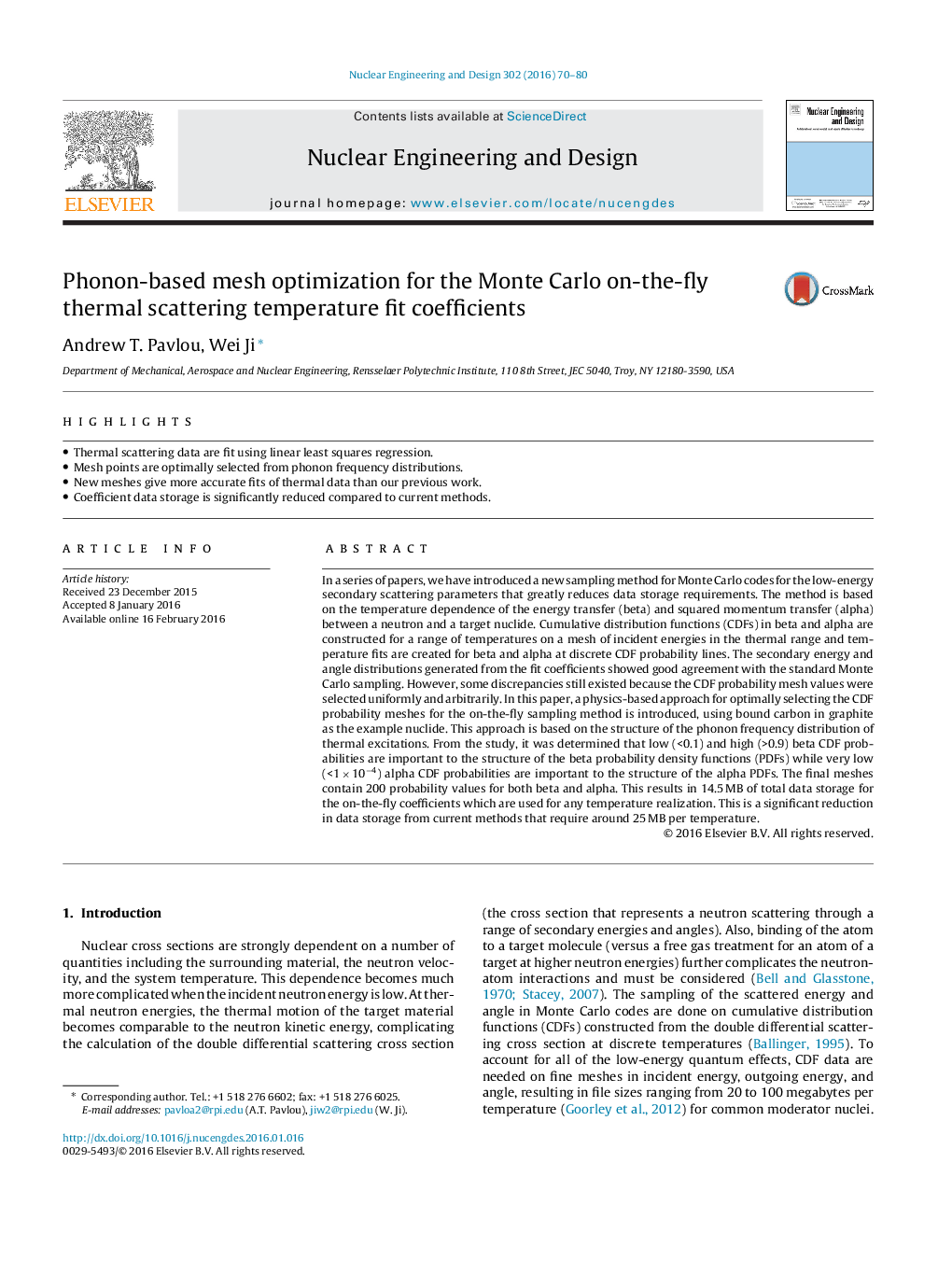| Article ID | Journal | Published Year | Pages | File Type |
|---|---|---|---|---|
| 295991 | Nuclear Engineering and Design | 2016 | 11 Pages |
•Thermal scattering data are fit using linear least squares regression.•Mesh points are optimally selected from phonon frequency distributions.•New meshes give more accurate fits of thermal data than our previous work.•Coefficient data storage is significantly reduced compared to current methods.
In a series of papers, we have introduced a new sampling method for Monte Carlo codes for the low-energy secondary scattering parameters that greatly reduces data storage requirements. The method is based on the temperature dependence of the energy transfer (beta) and squared momentum transfer (alpha) between a neutron and a target nuclide. Cumulative distribution functions (CDFs) in beta and alpha are constructed for a range of temperatures on a mesh of incident energies in the thermal range and temperature fits are created for beta and alpha at discrete CDF probability lines. The secondary energy and angle distributions generated from the fit coefficients showed good agreement with the standard Monte Carlo sampling. However, some discrepancies still existed because the CDF probability mesh values were selected uniformly and arbitrarily. In this paper, a physics-based approach for optimally selecting the CDF probability meshes for the on-the-fly sampling method is introduced, using bound carbon in graphite as the example nuclide. This approach is based on the structure of the phonon frequency distribution of thermal excitations. From the study, it was determined that low (<0.1) and high (>0.9) beta CDF probabilities are important to the structure of the beta probability density functions (PDFs) while very low (<1 × 10−4) alpha CDF probabilities are important to the structure of the alpha PDFs. The final meshes contain 200 probability values for both beta and alpha. This results in 14.5 MB of total data storage for the on-the-fly coefficients which are used for any temperature realization. This is a significant reduction in data storage from current methods that require around 25 MB per temperature.
